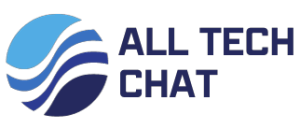Computer Assisted Audit
In today’s rapidly evolving business landscape, the field of accounting has seen a significant transformation. The advent of technology has paved the way for more efficient and accurate financial processes, and one such innovation is computer-assisted audit. This article delves into the world of computer-assisted audit, exploring its benefits, applications, and the future it holds for the accounting industry.
Understanding Computer Assisted Audit (CAA)
What is CAA?
Computer Assisted Audit, commonly referred to as CAA, is a technological approach that integrates computer software and tools into the traditional audit process. It aims to enhance the efficiency, accuracy, and comprehensiveness of financial audits.
The Evolution of Auditing
Auditing has come a long way from manual paper-based processes to the sophisticated CAA systems of today. The digital age has brought about a paradigm shift in how financial data is analyzed and evaluated. Also, read about Computing Innovations: A Ultimate Guide
The Benefits of CAA
Improved Accuracy
One of the primary advantages of CAA is its ability to reduce human errors. With advanced algorithms and data validation techniques, CAA systems can identify discrepancies and irregularities more effectively than traditional methods.
Enhanced Efficiency
CAA streamlines the audit process, automating repetitive tasks and allowing auditors to focus on more complex and strategic aspects of the audit. This leads to quicker turnaround times and cost savings for businesses.
Comprehensive Data Analysis
CAA tools can process vast amounts of financial data in real time. This allows auditors to gain deeper insights into an organization’s financial health and identify potential risks.
Risk Mitigation
By detecting anomalies and fraud patterns early, CAA contributes significantly to risk mitigation. It helps organizations prevent financial losses and reputational damage. For more interesting facts visit our website alltechchat.com
Applications of CAA
CAA software can analyze financial statements, balance sheets, and income statements to identify discrepancies, trends, and potential risks.
One of the critical applications of CAA is fraud detection. It can identify suspicious transactions and patterns that may indicate fraudulent activities.CAA plays a vital role in ensuring that organizations adhere to regulatory requirements. It automates compliance checks and generates comprehensive reports for audit purposes.
Continuous Monitoring
CAA systems can provide continuous monitoring of financial data, allowing organizations to react swiftly to any irregularities.
The Future of CAA
The future of computer-assisted audit is promising. As technology continues to advance, CAA systems will become even more sophisticated. Machine learning and artificial intelligence will play a more significant role in data analysis, making audits more efficient and accurate than ever before.

Overcoming Challenges with CAA
Integration Challenges
Implementing CAA into an organization’s existing audit processes can be challenging. It requires a seamless integration of technology into traditional audit practices. Training auditors to effectively use CAA tools and software is essential to overcoming this challenge.
Data Quality
The accuracy and reliability of CAA heavily rely on the quality of the data input. Inaccurate or incomplete data can lead to misleading audit results. Organizations must invest in data quality assurance to maximize the benefits of CAA.
CAA in Action
Case Study: XYZ Corporation
Let’s take a look at a real-world example of how CAA transformed the audit process for XYZ Corporation. This multinational company adopted CAA to streamline their financial audits. The results were astounding. Audit timelines were reduced by 30%, and accuracy levels soared, reducing financial discrepancies. This not only saved the company time but also led to significant cost savings.
The Human Touch in CAA
While CAA offers numerous advantages, it’s essential to remember that it’s a tool to aid auditors, not replace them entirely. The human element remains irreplaceable when it comes to understanding complex business contexts, making judgment calls, and interpreting nuanced data.
Auditors are still responsible for setting audit objectives, designing audit procedures, and providing valuable insights to organizations. CAA acts as a powerful assistant, handling repetitive tasks, data analysis, and anomaly detection.
Staying Updated with CAA Trends
Artificial Intelligence and Machine Learning
The future of CAA is closely tied to artificial intelligence (AI) and machine learning (ML). These technologies enable CAA systems to become more proactive in identifying potential risks and opportunities. For example, ML algorithms can predict financial trends and anomalies based on historical data, assisting auditors in making informed decisions.
Blockchain Integration
Blockchain technology is also gaining traction in CAA. It offers transparent and tamper-proof record-keeping, which can significantly enhance the trustworthiness of financial data. By integrating blockchain, CAA can further reduce the risk of fraud and data manipulation.
Cloud-Based CAA
The adoption of cloud-based CAA solutions is on the rise. This allows auditors to access and analyze data from anywhere, enhancing flexibility and collaboration among audit teams, especially in remote work environments.
The Bottom Line
In the ever-evolving landscape of accounting and auditing, computer-assisted audit has emerged as a powerful ally. Its ability to improve accuracy, efficiency, and risk management makes it an indispensable tool for auditors and organizations.
As businesses continue to grow and embrace digital transformation, CAA will evolve alongside them, becoming smarter, more intuitive, and more integrated into the audit process. The future of auditing is undeniably intertwined with the continued advancement of technology, and CAA is at the forefront of this exciting journey.
Implementing CAA: A Step-by-Step Guide
Assessment and Planning
Before diving into CAA, organizations should assess their audit needs, data volume, and the specific objectives they aim to achieve with CAA. A well-defined plan is crucial to ensure a successful integration.
Selecting the Right CAA Tools
There are various CAA software solutions available in the market. Organizations should carefully choose the tools that align with their goals and provide the necessary features, such as data analysis, reporting, and security measures.

Data Integration
Integrating CAA into existing systems requires a seamless flow of data. It’s essential to establish data connections, ensure data accuracy, and set up data validation processes.
Training and Skill Development
Auditors and staff members must undergo training to effectively use CAA tools. This step is vital to maximize the benefits of CAA and minimize errors.
Test Runs and Quality Assurance
Before full-scale implementation, organizations should conduct test runs and quality assurance checks to identify and rectify any issues or discrepancies in the CAA system.
Conclusion
In conclusion, computer-assisted audit is a game-changer in the field of accounting. Its ability to enhance accuracy, efficiency, and comprehensive data analysis makes it an invaluable tool for auditors and organizations alike. As technology continues to evolve, CAA will remain at the forefront of modern accounting practices.
FAQs
1. Is computer-assisted audit suitable for all types of businesses?
CAA can be beneficial for businesses of all sizes and industries. It can be customized to meet specific audit requirements.
2. How does CAA handle sensitive financial data?
CAA systems are designed with robust security measures to protect sensitive financial information. Encryption and access controls are typically in place.
3. Can CAA completely replace human auditors?
While CAA enhances the audit process, human auditors still play a crucial role in interpreting results, making judgments, and providing insights.
4. What are the costs associated with implementing CAA?
The costs of implementing CAA can vary depending on the size and complexity of the organization. However, the long-term benefits often outweigh the initial investment.
5. How can businesses get started with computer-assisted audit?
Businesses interested in implementing CAA should consult with technology providers and audit experts to develop a tailored solution that meets their needs.
